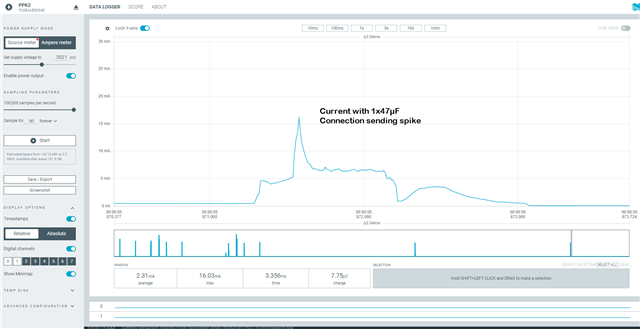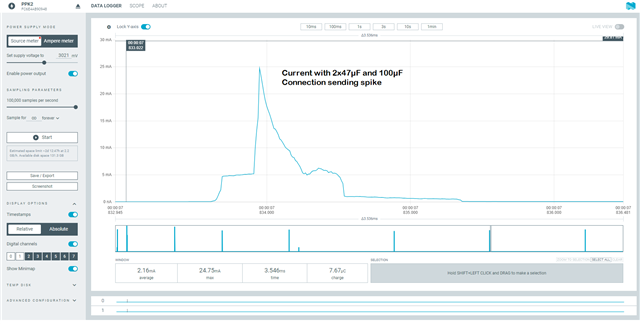Hi,
I'm facing a critical issue with our sensor's power setup and would really appreciate any insights or suggestions.
Our sensor is currently using a CR2477 battery, and I'm running into problems due to the load resistance of the battery. When transmitting data, especially after switching from PHY_1M to PHY_CODED_S8, the battery voltage drops enough to trigger the Brown Out Reset (BOR), which then resets the sensor. I noticed this specifically with PHY_CODED_S8 since the transmission takes longer, causing a larger voltage drop.
Occasionally, the sensor also completely hangs—even after the voltage recovers back to 3V again. From my understanding, this seems to be expected behavior with the nRF52 when experiencing a brownout, as only a full power cycle can bring it back online - why is that so and can I prevent this?
Has anyone experienced similar issues or found software and/or hardware solutions to prevent these resets? I’d be especially interested in any software adjustments to handle the BOR more gracefully or hardware tips for improving power stability with high load resistance batteries in future versions of the sensor.
Currently I'm powering directly via the CR2477 to VDD and VDDHV with a 47µF and a 4.7µF capacitor (and of course the standard 100nF on each power input)
DCDC on µC is enabled
Setup:
NRF52840, NCS2.6.1, Zephyr
Thanks in advance for any advice!
Best Regards,
Phobios



